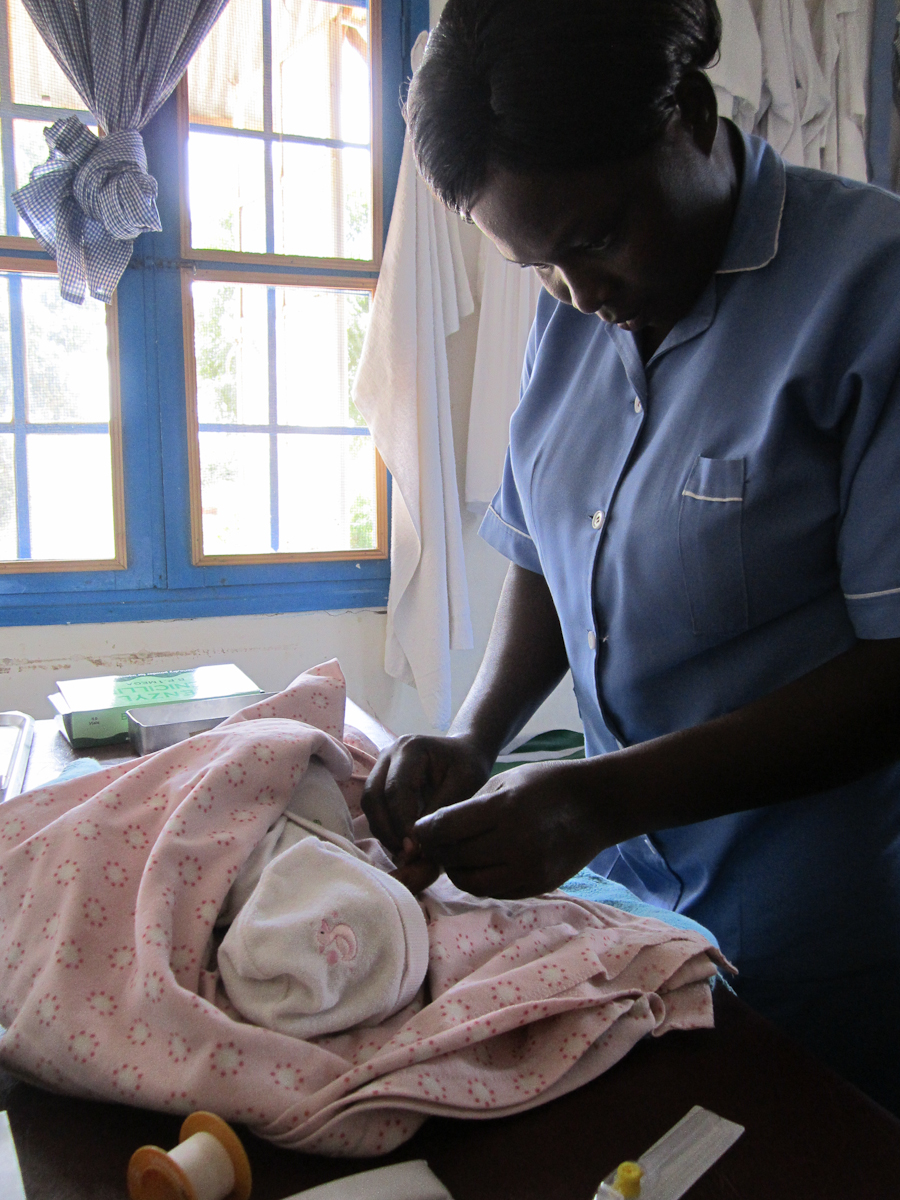As you may have read in the previous blog, I have seen many beautiful things these days in Uganda, but there also were the first tears..
Life and death is sometimes close together and this can be quite confronting. I consciously choose to draw a realistic picture of the work in an orphanage-shelter. I don’t want to dramatise, it is as it is. You can’t do more than your best.
When I enter the room of the premature babies the next morning, the situation is suddenly far from peaceful. Baby Martha is being held with her head a bit upwards, because lying flat she doesn’t get enough air. I’m upset! The situation for a baby can change so drastically. I’ve never seen the fontanel so clearly, which is not a good sign. It means dehydration. She doesn’t look well and you can see her fighting.. Together we do the tube feeding of 8.45 a.m. and also change the nappies. After this, I take her in my arms and the night shift leaves for some sleep. Now Els, the head of the organisation, comes in to take a look. The breathing is very unstable and Els goes to the neighbours to look for an infuse, hoping there is no layabout at work 😉
When Els has left, Martha seems to stop breathing. It takes a few seconds and we start pushing her chest somewhat. Fortunately, after a few seconds she continues breathing. It seemed to take hours.. We’re quite upset, but Els arrives to say that we can come with her immediately. With Martha in my arms I go to the clinic; this time there’s a female doctor. She ties a rubber band to one of Martha’s legs and taps on a blood vessel. Fortunately, the infusing insertion succeeds. However, Martha doesn’t show a sign of reaction, which is not good. Back in the room she receives antibiotics and an infuse against dehydration.
Back at Amecet we put her in a wipper-chair so that she’s diagonally up and wrapped in cloth. It’s my task to monitor her face to face today. She’s connected to the hartsaturation respirator and is given oxygen. So many tubes in such a small body.. Here I am. Watching her breath and heartbeat for hours. Till the end of the morning they are quite stable and I give her feeding- tubes and change her nappy. Quite something for such a small weak body. You have to be very careful with all those tubes. After this her breathing gets a bit restless and around 12.30 p.m. the heart rate rises and drops very fast, from 135 to 65 in a few seconds and back, five times. Most of the time I am alone in the room. I call a colleague to bring a note to Els explaining the situation and asking what to do.
I’m happy she comes quickly and while she’s watching her, Martha stops breathing. Els grabs her and pushes her chest. She has a serious and very worryied look. Several times she says she thinks Martha is leaving. She listens to the heartbeat, which is hardly there and very slow. Still she’s not breathing. I burst into tears. The panic and despair overwhelm me, looking at the lifeless body. Come on, fight!! Then she gets this Cheyne-Stokes respiration, and after a while her chest goes up and down. I’ve got tears rolling and I really get upset for a while. We really thought we had lost her..
I feel so proud of this little fighter!!! Wow!! Only three weeks old and already enduring so much..
Els goes to get the doctor in the clinic, who advises another infusion and other antibiotics, and every hour 10 ml of ORS in addition to the 15 ml of milk every two hours. After this, her breathing drops and rises a little, but after a few hours she’s stable and asleep peacefully. I would love to take her in my arms, to provide maximum love and warmth, but with the tube feeding it is not convenient.
Clearly, this is my toughest service so far..

